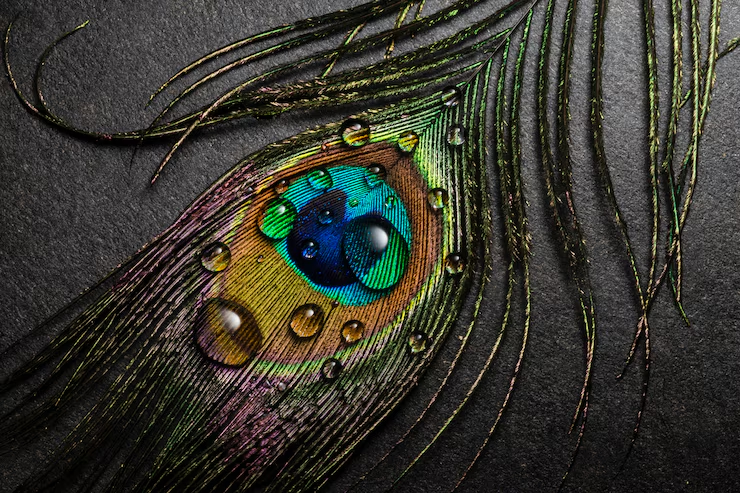The eternal love between Lord Krishna and Radharani (Radha) is one of the most celebrated divine relationships in Hindu spirituality. Their bond transcends the physical realm, symbolizing the ultimate union of the soul (Radha) with the Supreme Divine (Krishna). This sacred love story is not just a tale of romance but a profound spiritual allegory that teaches devotion, surrender, and the path to divine bliss.
In this blog post, we will explore:
- The divine identities of Krishna and Radharani
- The significance of their love in Hindu scriptures
- The spiritual meaning behind their relationship
- Famous stories and pastimes (leelas) of Radha-Krishna
- The lessons we can learn from their eternal bond
1. Who Are Krishna and Radharani?
Lord Krishna: The Supreme Personality of Godhead
Krishna, the eighth avatar of Lord Vishnu, is worshipped as the Supreme God in Hinduism. He is known for his playful childhood in Vrindavan, his wisdom in the Bhagavad Gita, and his role as the charioteer of Arjuna in the Mahabharata.
Krishna embodies:
- Divine Love (Prem) – His leelas (divine pastimes) with the gopis (cowherd girls) and Radha exemplify pure devotion.
- Supreme Truth (Sat-Chit-Ananda) – He represents eternal truth, consciousness, and bliss.
- The Ultimate Protector – As the destroyer of evil (like Kansa and Putana), he protects his devotees.
Radharani: The Embodiment of Divine Love
Radha, also known as Radharani or Radhika, is considered the supreme goddess of love and devotion. Though she is not explicitly mentioned in the Bhagavata Purana, her presence is deeply rooted in Bhakti traditions, especially in the Brahma Vaivarta Purana and Gita Govinda.
Radha symbolizes:
- Pure Devotion (Bhakti) – Her love for Krishna is selfless and unconditional.
- The Feminine Divine (Shakti) – She is the energy (Hladini Shakti) that enhances Krishna’s bliss.
- The Soul’s Yearning for God – Her separation (viraha) from Krishna represents the soul’s longing for divine union.
2. The Significance of Radha-Krishna’s Love in Scriptures
Radha-Krishna in the Bhagavata Purana
While Radha is not directly named in the Bhagavata Purana, the Rasa Lila (divine dance) describes Krishna’s mystical interactions with the gopis, where Radha is believed to be the foremost among them.
Gita Govinda by Jayadeva
The 12th-century poetic masterpiece by Jayadeva vividly describes the romantic and spiritual love between Radha and Krishna. It portrays Radha’s deep emotions—her longing, jealousy, and ultimate union with Krishna.
Brahma Vaivarta Purana
This scripture highlights Radha as Krishna’s eternal consort, stating that she is his divine energy and the source of all his happiness.
3. The Spiritual Meaning Behind Radha-Krishna’s Love
The love between Radha and Krishna is not ordinary—it represents:
A. The Union of Jivatma (Soul) and Paramatma (God)
- Radha symbolizes the individual soul, and Krishna is the Supreme Soul.
- Their love signifies the soul’s journey toward merging with the Divine.
B. The Power of Selfless Devotion (Bhakti Yoga)
- Radha’s love is without expectation—she does not seek anything in return.
- This teaches devotees to love God purely, without material desires.
C. The Concept of Divine Separation (Viraha Bhakti)
- Radha’s pain in separation from Krishna is a metaphor for the devotee’s longing for God.
- This intense yearning leads to deeper spiritual realization.
4. Famous Stories and Pastimes of Radha-Krishna
A. The Divine Flute Call
Krishna’s flute mesmerized Radha and the gopis, drawing them to him. The flute symbolizes the call of the Divine, attracting pure souls toward spiritual awakening.
B. The Rasa Lila – The Cosmic Dance
In the moonlit forests of Vrindavan, Krishna performed the Rasa Lila, dancing with Radha and the gopis. This dance represents the divine play between God and his devotees.
C. Radha’s Unmatched Love
Once, Krishna pretended to have a stomach ache and said only the dust of a true devotee’s feet could cure him. While others hesitated, Radha immediately offered her foot dust, proving her selfless love.
D. The Curse of Separation
Due to a sage’s curse, Radha and Krishna were separated. This signifies that true love is tested through trials, making the final union even sweeter.
5. Lessons from Radha-Krishna’s Love
A. Love Without Conditions
Radha’s devotion was not based on Krishna’s wealth, power, or beauty—it was unconditional. Similarly, we should cultivate selfless love in relationships.
B. The Importance of Surrender
Radha completely surrendered to Krishna, teaching us that true devotion requires letting go of ego.
C. The Bliss of Divine Connection
Their union represents Ananda (divine bliss), showing that real happiness comes from spiritual connection, not material pleasures.
D. The Path of Bhakti (Devotion)
Radha-Krishna’s love inspires millions to follow Bhakti Yoga—the path of love, prayer, and surrender to God.
Conclusion
The love story of Radha and Krishna is not just a mythological tale but a spiritual guide for humanity. It teaches us that the highest form of love is selfless, pure, and divine. By meditating on their sacred bond, we can awaken our own spiritual devotion and experience the bliss of divine love.
Whether through chanting “Radhe Krishna”, reading their leelas, or visiting Vrindavan and Mathura, their eternal love continues to inspire seekers on the path of devotion.
Radhe Radhe!
FAQs About Radha-Krishna
Q1. Why is Radha not mentioned in the Bhagavad Gita?
A: Radha’s prominence grew in later Bhakti traditions, particularly in texts like the Brahma Vaivarta Purana and Gita Govinda.
Q2. Did Radha and Krishna get married?
A: In some traditions, Radha is considered Krishna’s eternal consort, though they did not have a worldly marriage.
Q3. Why is Radha worshipped with Krishna?
A: Radha represents devotion, and Krishna represents God. Together, they symbolize the union of love and the Divine.
Q4. What is Radha-Krishna’s message to the world?
A: Their love teaches pure devotion, selflessness, and the eternal bond between the soul and God.

